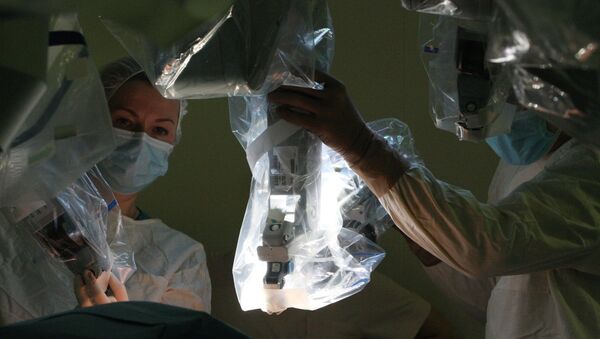Unlike most other systems, the robot is entirely portable, weighs less than 5 kilograms (11 pounds) and can be set up in any surgery without requiring additional space. In contrast, da Vinci weighs more than a tonne and requires a separate room.
"Da Vinci is cable-actuated, while our robot is fully digital… We had the objective of making it small enough to pack in a suitcase. The country is large, we must be able to drive there, plug it in and start work," the Russian Health Ministry's Chief Urologist Dmitry Pushkar said at the presentation event.
The system is also capable of wielding a wide range of surgical tools using removable arms.
"The core of the robot is Russian-made, it is made up of Russian components and is based on a Russian operating system made by Russian scientists… We have turned a page in… robotics and microsurgery. The system does not have any known counterparts," Krayevoy said.
The system could be ready for purchase by clients within two years if financial support, a major part of it provided by the Health Ministry, does not dry up, according to one of the developers.
Work on the system started several years ago before trials on animals started last year. The robot was initially designed to carry out urological operations but was later modified to operate other parts of the body using minimally invasive methods. Operations involving the machine are capable of accessing the hardest to reach parts of the human body with minimal blood loss and little overall impact on the patient. A typical urological operation using the robot would have the patient walk out of hospital just a day after a 1.5-hour long procedure.




